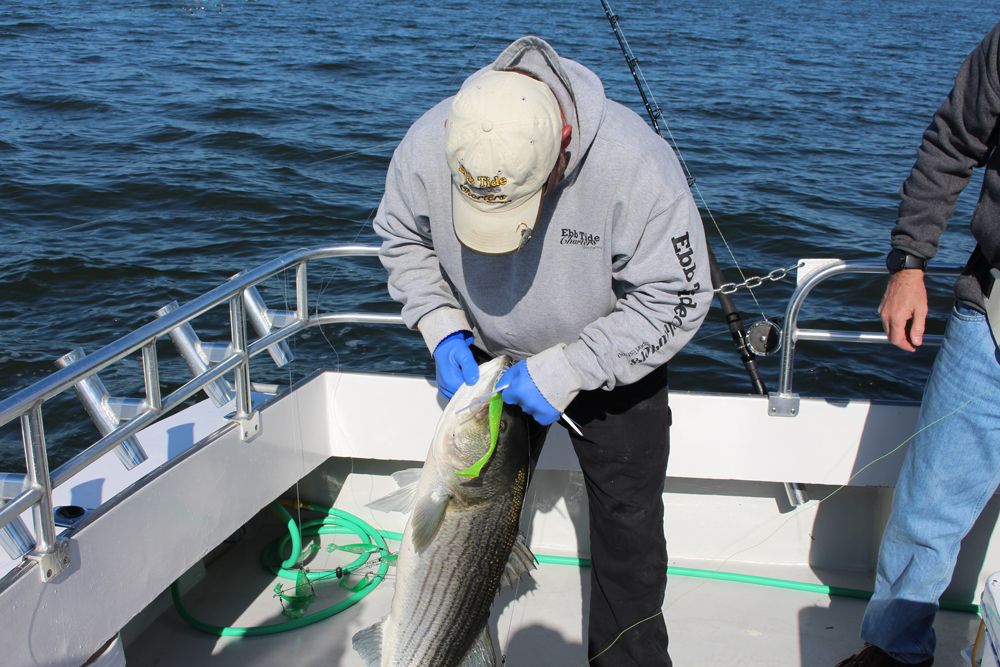Will big stripers come back into the Bay this fall? Season to season this run varies quite a bit, and there’s no telling whether or not we’ll see ocean-run fish this year. Hopefully they’ll turn right at the mouth of the Bay as they head southward, and your chances of catching a truly huge rockfish will go through the roof. It may, if you know the proper tactics. One of these three methods will put a serious bend in your rod.

1. Trolling is the number-one most effective way to catch these fish, which are often scattered and prowling high in the water column. That means it’s time to break the planer boards back out, because as one might expect, spring trolling spreads are the ticket to success. Stick with the same large offerings you use during trophy season: tandems, umbrellas, and #21 spoons. Some seasons, adding red or green hoses into the mix is a good move. Read Spring Trophy Striper Trolling Spreads, if you need a refresher on how it's done.
2. Jigging will also take some fish, but it’s a tougher endeavor. If the big fish return they’re often accompanied by gannets, which indicate the location of big fish hunting bunker. You’ll know when you see gannets versus gulls by their larger wingspan, black wing tips, and the way they soar high above before plummeting into the water to feed. Another way to locate jig-able fall beasts is by hitting warm water discharges. This bite doesn’t usually get hot until the water temperatures get very cold so this is a better bet late in the season, but once the water dips down below the 60-degree mark you could find a big fish or two here and there in the artificially heated areas.
3. Eeling is a great way to take big stripers – they just love sucking down those snakes. In Virginian waters eels are commonly suspended back behind the boat beneath a large float, while up north, most anglers drift eels along the bottom over humps and channel edges. In either case, remember to allow a five-count before coming tight because it often takes the rockfish a moment or two to get the eel all the way into its mouth.